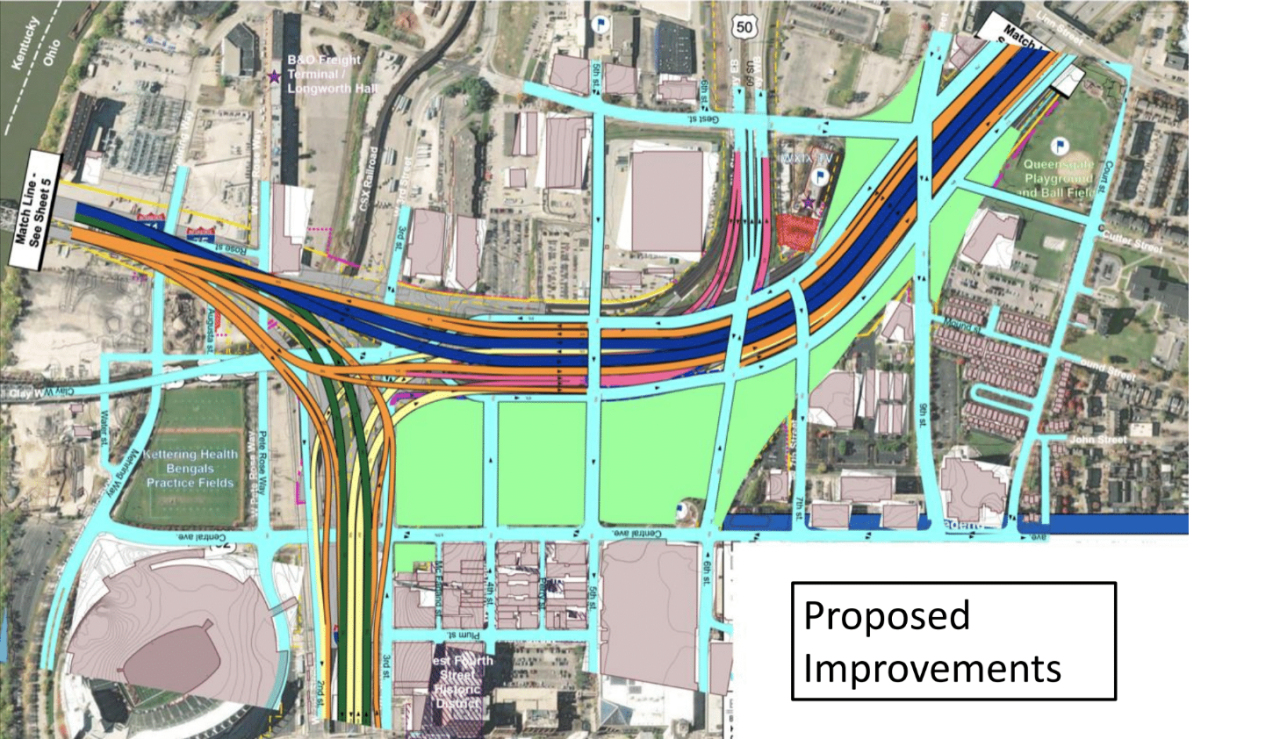CINCINNATI — A plan for the Brent Spence Bridge project could open up more land in downtown Cincinnati. The problem is officials say it could cost $100 million more than what Ohio and Kentucky had in mind.
A memo released by the Bi-State Management Team (BSMT) used phrases like "technical challenges" and "safety issues" when describing the plan put forward by the group Bridge Forward.
Bridge Forward's vision for the project includes improved walkability and enhanced public safety, as well as reconnecting neighborhoods on the Cincinnati side of the bridge. The design would condense the highways leading to the Brent Spence Bridge and the new companion bridge set to be built next to it, and open up the 30 acres adjacent to downtown.

Former mayors John Cranley and Mark Mallory have been working with the group and advocating for the design. Several community councils have also voted to support the plan.
"The original construction of I-75 really decimated the West End community," Mallory said. "This is an opportunity to start putting some of those pieces back together."
RELATED | 'We think we can do better:' Tri-State group presents alternate Brent Spence Bridge project design
But freeing up nearly 24 acres of land, compared to almost 13 acres proposed by BSMT, comes at a higher price. The BSMT memo mentions "geometric issues" and "stacking the interchange," which results in "frontage roads at an elevation about 30 to 40 feet higher than the surrounding land." It also refers to "safety issues" because of what it called "added conflict points and additional pedestrian crossing lengths."
"These are the kinds of things that we expect the professionals at ODOT to be able to figure out," Mallory said.
Both Mallory and Cranley said the memo does not mean the plan has hit a dead end. Instead, it's a road map to getting the project done.
"In defense of ODOT, their job is not to make these local decisions. They're just (the) engineers, giving us a price tag. We either want to pay it or we don't," Cranely said.
Cranley said the community should make the decision — "Is it worth an extra 3.5% for a much better plan or not?"
There are questions about where the money would come from. Cranley suggested tapping into the countywide sales tax revenue generated from when voters approved Issue 7 in 2020. That money is for transit-related infrastructure improvements. However, we're still waiting to see if city and county leaders are on board with the Bridge Forward plan given these new findings.




